- Home
- Jules Verne
From the Earth to the Moon Page 15
From the Earth to the Moon Read online
Page 15
Among the groups of all kinds which assailed him, the “lunatics” were particularly aware of what they owed to the future conqueror of the moon. One day several of these poor people, rather numerous in America, came to him and asked to be allowed to return to their native land with him. Some of them claimed to be able to speak the lunar language and offered to teach it to him. He good-naturedly indulged their innocent mania and agreed to deliver messages to their friends on the moon.
“A strange madness!” he said to Barbicane after he had sent them away. “It’s a madness that often strikes superior minds. One of our most famous scientists, Arago, told me that many sane and sober people became greatly excited and developed incredible peculiarities whenever the moon took possession of them. You don’t believe in the influence of the moon on illnesses?”
“Hardly,” said Barbicane.
“I don’t believe in it either, yet history has recorded some facts that are at least surprising. During an epidemic in 1693, for example, the death rate went up on January 21, when there was an eclipse. The famous Bacon lost consciousness during eclipses of the moon and didn’t regain it until they were completely over. King Charles VI had six fits of insanity in 1399, all of them during either the new moon or the full moon. Some doctors have classified epilepsy among illnesses that follow the phases of the moon. Nervous illnesses have often appeared to be influenced by it. Mead tells of a child who went into convulsions whenever the moon was in opposition. Gall noticed that the overexcitement of sickly people increased twice a month, at the time of the new moon and the full moon. And there are countless observations of the same kind on dizzy spells, malignant fevers, and somnambulism, all tending to prove that the moon has a mysterious influence on earthly illnesses.”
“But how? Why?” asked Barbicane.
“Why? Well, I’ll give you the same answer that Arago repeated nineteen centuries after Plutarch: ‘Perhaps it’s because it’s not true!’ ”
In the midst of his triumph, Michel Ardan could not escape from any of the ordeals inherent in the position of a famous man. Successful promoters wanted to exhibit him. Barnum offered him a million dollars to allow him to take him from town to town all over the United States and show him off as though he were some kind of strange animal. Ardan called him a mahout and sent him packing.
Although he refused to satisfy the public’s curiosity, his portraits, at least, circulated all over the world and occupied the place of honor in many an album. They were printed in all formats: some were life-size, others were no bigger than a postage stamp. Everyone was able to have his hero in every pose imaginable: face, bust or full-length, from the front, from the side, three-quarters or from the back. Over a million and a half of them were printed. Ardan had a fine chance to sell little parts of himself as relics, but he did not take advantage of it. If he had wanted to sell his hairs for a dollar apiece, he still had enough of them left to make his fortune!
The truth was that this popularity did not displease him. Quite the contrary. He placed himself at the public’s disposal and corresponded with people all over the world. His witty remarks were repeated and spread, especially those he had never made; many were lent to him, in accordance with the French saying that one lends only to the rich.
There were women among his admirers as well as men. How many “good matches” he could have made, if he had taken it into his head to “settle down”! Old maids especially, those who had been withering on the vine for forty years, dreamed night and day in front of his photographs.
He could easily have found hundreds of wives, even if he had demanded that they go to the moon with him. Women are either fearless or afraid of everything. But since he had no intention of founding a Franco-American family on the moon, he refused.
“I’m not going up there to play the part of Adam with a daughter of Eve!” he said. “All I’d have to do would be to come across a snake, and then …”
As soon as he was finally able to get away from the too often repeated joys of triumph, he went with his friends to pay a visit to the cannon. He felt that he at least owed it a little attention. Besides, he had become an expert on ballistics since he had begun living with Barbicane, J. T. Maston, and their colleagues. His greatest pleasure was to tell those staunch artillerymen that they were nothing but charming and skillful murderers. He constantly made jokes on the subject. When he visited the cannon he admired it greatly and went down to the bottom of the gigantic tube that would soon send him on his way to the moon.
“At least this cannon won’t hurt anyone,” he said, “and that’s a rather amazing quality in a cannon. But as for your weapons that destroy, burn, shatter, and kill, I don’t even want to hear about them.”
At this point we must report an incident involving J. T. Maston. When he heard Barbicane and Nicholl accept Ardan’s suggestion, he resolved to join them and make the group a foursome. One day he asked to be included in the journey. Barbicane, heartbroken, told him that the projectile could not carry so many passengers. In despair, J. T. Maston went to Ardan, who told him he must resign himself, and used ad hominem arguments.
“I hope you won’t be offended by what I’m about to say, Maston, but, just between you and me, you’re too incomplete to put in an appearance on the moon.”
“Incomplete!” cried the valiant artilleryman.
“Yes, my good friend. Think what would happen if we met inhabitants up there. Would you like to give them a deplorable idea of what happens here on earth by telling them what war is, and showing them that we spend most of our time devouring each other and breaking each other’s arms and legs, on a globe that could feed a hundred billion people and now has only a billion and a quarter? Come, come: you’d make them refuse to speak to us!”
“But if you’re smashed to pieces when you land,” said J. T. Maston, “you’ll be as incomplete as I am!”
“That’s true, but we won’t be smashed to pieces,” replied Ardan.
His confidence was based partly on the fact that on October 18 a preparatory experiment had given excellent results. Wishing to study the initial jolt inside a projectile, Barbicane had sent for a thirty-two-inch mortar from the naval base at Pensacola. It was set up on the shore of the bay, so that its shells would fall into the sea. A hollow shell was carefully prepared for the singular experiment. The inside walls were lined with thick padding over springs made of the finest steel, forming a kind of nest.
“What a shame I can’t get into it!” said J. T. Maston, regretting that his size prevented him from participating directly in the experiment.
In this charming shell, which could be closed by means of a cover that screwed into place, Barbicane placed first a big cat, then a squirrel that belonged to J. T. Maston and was his favorite pet. He wanted to know how this little animal, which was not likely to suffer from dizziness, would be affected by the experimental journey.
The mortar was loaded with 160 pounds of powder and the shell was put in place. The weapon was fired.
The projectile shot out of the barrel, majestically described its parabola, reached an altitude of about a thousand feet, and moved downward in a graceful curve until it plunged into the water.
A boat hurried to the spot where it had fallen. Skilled divers leapt into the water and attached cables to the ears of the shell, which was quickly hoisted aboard the boat. Less than five minutes had gone by from the time the animals were enclosed to the time when the cover of their prison was unscrewed.
Ardan, Barbicane, Maston, and Nicholl were in the boat, and they watched the operation with a feeling of interest that is easy to understand. As soon as the shell was opened, the cat jumped out, a little rumpled but full of life, and showing no signs of having just returned from an aerial expedition. But there was no squirrel. They looked carefully. Not a trace of him. They had to face the truth: the cat had eaten his traveling companion.
J. T. Maston was greatly saddened by the loss of his poor squirrel, though he was somewhat consoled by the knowle
dge that he was a martyr to science.
After this experiment, all hesitation and fear vanished. Furthermore, Barbicane’s plans were to improve the projectile still more and almost entirely eliminate the effects of the initial jolt. There was nothing left to do but leave.
Two days later, Michel Ardan received a message from the President of the United States. He fully appreciated the honor. Like his chivalrous compatriot, the Marquis de La Fayette, he had been made an honorary citizen of the United States of America.
CHAPTER 23
THE PROJECTILE COACH
AFTER THE completion of the famous cannon, public interest turned to the projectile, the new vehicle that would take the three bold adventurers into space. No one had forgotten that in his cablegram of September 30 Michel Ardan had asked for a modification of the plans drawn up by the members of the committee.
Barbicane had rightly thought that the shape of the projectile was unimportant, for, after going through the earth’s atmosphere in a few seconds, it would be moving in an absolute vacuum. The committee had agreed on a spherical shape so that the projectile could spin and behave as it pleased. But now that it was going to be transformed into a vehicle, it was another matter. Michel Ardan did not want to travel like a squirrel in a cage; he wanted to have his head up and his feet down, with as much dignity as if he were in the basket of a balloon, though he would, of course, be moving much more swiftly. He had no desire to turn unseemly somersaults during his journey.
New plans were sent to Breadwill & Co. in Albany, with instructions to begin work without delay. The redesigned projectile was cast on November 2 and immediately sent to Stone Hill by means of the eastern railroads. It arrived undamaged on November 10. Ardan, Barbicane, and Nicholl were impatiently awaiting the “projectile coach” in which they were going to set off to discover a new world.
No one can deny that it was a magnificent piece of work, a metallurgical product that was a great credit to American industrial genius. It was the first time that aluminum had ever been obtained in such a large mass, and this alone was rightly regarded as a prodigious feat. The precious projectile sparkled in the sunlight. With its impressive size and its conical cap it might have been taken for one of those thick pepper-box turrets which medieval architects placed at the corners of fortresses. It lacked only loopholes and a weathervane.
“I expect,” said Michel Ardan, “to see soldiers come out of it carrying arquebuses and wearing chain mail. We’ll be like feudal lords up there, and with a little artillery we’ll be able to hold off all the armies on the moon, if there are any.”
“So you like the vehicle?” asked Barbicane.
“Yes, of course,” replied Ardan, who had been examining it from an artistic point of view. “I only regret that it doesn’t have a more slender shape and a more graceful cone. It might have had a cluster of metal ornaments on the end, with a chimera, for example, or a gargoyle, or a phoenix coming out of the fire with outspread wings and open mouth …”
“What for?” asked Barbicane, whose practical mind was not very sensitive to the beauties of art.
“What for? Since you ask me the reason, I’m afraid you’ll never understand it!”
“Tell me anyway, my friend.”
“Well, I feel that we should always put a little art into what we do. It’s better that way. Do you know an Indian play called The Child’s Cart?”
“Never heard of it.”
“I’m not surprised,” said Ardan. “In that play there’s a thief who’s about to cut a hole in the wall of a house but can’t decide whether to give his hole the shape of a lyre, a flower, a bird, or an amphora. Now tell me, Barbicane, if you had been a member of the jury, would you have condemned that thief?”
“Without hesitation,” replied Barbicane, “especially since he was also guilty of housebreaking.”
“And I would have acquitted him! That’s why you’ll never be able to understand me!”
“I won’t even try, my valiant artist.”
“Since the outside of our projectile coach leaves something to be desired, I hope I’ll at least be allowed to furnish it with all the luxury befitting ambassadors from the earth.”
“As far as the inside is concerned, you can arrange it any way you like!”
But before going on to the esthetic Barbicane had concerned himself with the practical, and the system he had invented for lessening the effects of the initial jolt was constructed with perfect precision.
He had told himself, not without reason, that no spring would be strong enough to deaden the impact, and during his famous stroll in the Skersnaw Woods he had finally resolved this great difficulty in an ingenious way. He was going to call on water to render him that outstanding service. Here is how.
The projectile was to be filled with water to a height of three feet. Over it would be a waterproof wooden disk fitting tightly against the inner wall but able to slide on it. The three passengers would be on this circular raft. The water would be divided by horizontal partitions which the first shock would break successively. Each layer of water would be driven upward through pipes, and would thus act as a spring, while the disk, equipped with strong buffers, would not be able to strike the bottom until each of the partitions had been broken. The passengers would no doubt still experience a violent impact after all the water had been driven out, but Barbicane expected the first shock to be entirely deadened by this extremely strong spring.
It is true that three feet of water with a surface area of fifty-four square feet would weigh nearly 11,500 pounds, but, according to Barbicane, the propulsive force of the cannon would be enough to overcome this increase in weight; furthermore, the water would all be driven out in less than a second, and the projectile would then resume its normal weight.
Such was Barbicane’s solution to the serious problem of the initial shock. The work was intelligently understood and capably executed by the engineers of Breadwill & Co. Once the effect had been produced and the water had been driven out the passengers could easily get rid of the broken partitions and take apart the sliding disk that would support them at the moment of departure.
As for the upper walls of the projectile, they were covered with thick leather padding over coils of fine steel which had the flexibility of watch springs. The pipes through which the water would escape were completely hidden beneath this padding.
Thus every imaginable precaution had been taken to deaden the initial shock. “If we let ourselves be crushed now,” said Michel Ardan, “we’ll have to be made of very bad material.”
The projectile had an outside diameter of nine feet and a height of twelve feet. In order not to exceed the assigned weight, the thickness of its walls had been reduced a little, and its bottom, which would have to withstand the violent thrust of the gases produced by the explosion of the guncotton, was reinforced. This is how bombs and cylindroconical shells are made: their bottoms are always thicker than their sides.
Entrance into this metal tower was by way of a narrow opening in the cone which looked like the manhole in a steam boiler. It was hermetically closed by means of an aluminum plate firmly bolted in place from the inside. The passengers would thus be able to leave their mobile prison when they reached the moon.
But it was not enough for them to go: they must also be able to see on the way. This was easily arranged. Under the padding were four portholes with panes of thick optical glass; two were in the circular wall of the projectile, one was in its bottom, and another was in its conical cap, so that the passengers would be able to see the receding earth, the approaching moon, and the starry reaches of space. These portholes were protected against the initial shock by solidly embedded steel plates which could be opened from the inside by bolts. In this way, the air in the projectile could not escape, and observation was possible.
All these admirably constructed mechanisms functioned perfectly, and the engineers had shown equal intelligence in the inner fittings of the projectile.
There were so
lidly attached containers for food and water. The passengers could even have fire and light by means of gas stored in a special container at a pressure of several atmospheres. They would only have to turn on a faucet. There was enough gas to heat and light the comfortable vehicle for six days. It can be seen that nothing was lacking in the way of necessities for life and even well-being. And, thanks to Michel Ardan’s artistic instincts, the pleasant was joined to the useful in the form of art objects. He would have made his projectile into a veritable artist’s studio if he had not been short of space.
It would be a mistake to assume that three people had to be cramped in that metal tower. It had an area of fifty-four square feet and a height of about ten feet, enough to give the passengers a certain freedom of movement. They would not have been more at ease in the most comfortable railroad car in the United States.
When the question of food and light had been settled, there still remained the question of air. It was obvious that the air in the projectile would not be enough for four days. In an hour, one man consumes all the oxygen in about twenty-five gallons of air. Barbicane, his two companions, and the two dogs they intended to bring with them would consume six hundred gallons of oxygen, or about seven pounds, in twenty-four hours. The air in the projectile would therefore have to be renewed. How? By a very simple process, that of Reiset and Regnault, that Michael Ardan had referred to during the discussion at the meeting.

 Michael Strogoff; Or the Courier of the Czar: A Literary Classic
Michael Strogoff; Or the Courier of the Czar: A Literary Classic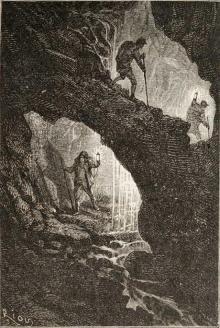 Voyage au centre de la terre. English
Voyage au centre de la terre. English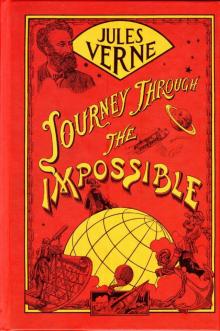 Journey Through the Impossible
Journey Through the Impossible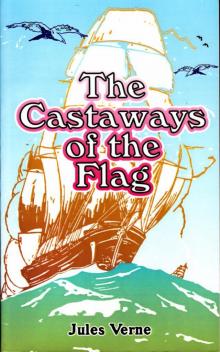 The Castaways of the Flag
The Castaways of the Flag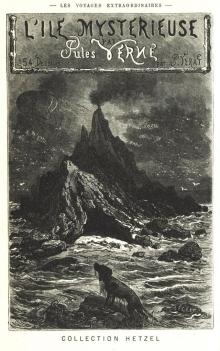 L'île mystérieuse. English
L'île mystérieuse. English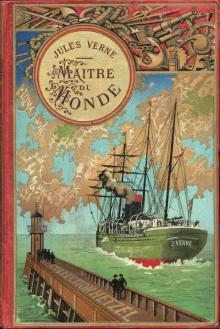 Maître du monde. English
Maître du monde. English Around the World in Eighty Days
Around the World in Eighty Days A Voyage in a Balloon
A Voyage in a Balloon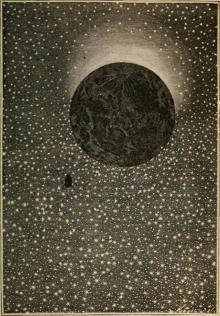 From the Earth to the Moon, Direct in Ninety-Seven Hours and Twenty Minutes: and a Trip Round It
From the Earth to the Moon, Direct in Ninety-Seven Hours and Twenty Minutes: and a Trip Round It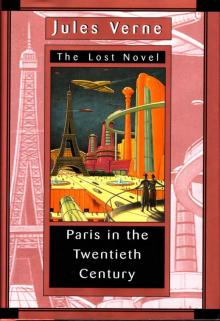 Paris in the Twentieth Century
Paris in the Twentieth Century City in the Sahara - Barsac Mission 02
City in the Sahara - Barsac Mission 02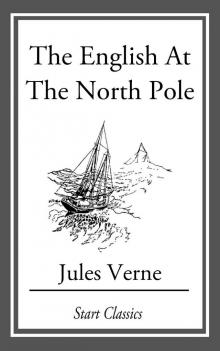 The English at the North Pole
The English at the North Pole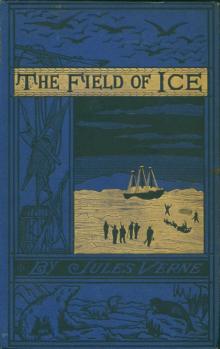 The Field of Ice
The Field of Ice From the Earth to the Moon
From the Earth to the Moon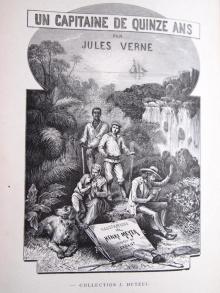 Un capitaine de quinze ans. English
Un capitaine de quinze ans. English The Mysterious Island
The Mysterious Island Les indes-noirs. English
Les indes-noirs. English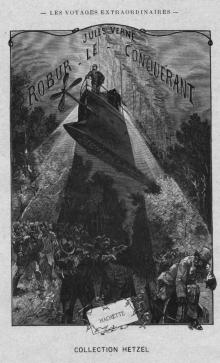 Robur-le-conquerant. English
Robur-le-conquerant. English Propeller Island
Propeller Island Around the World in Eighty Days. Junior Deluxe Edition
Around the World in Eighty Days. Junior Deluxe Edition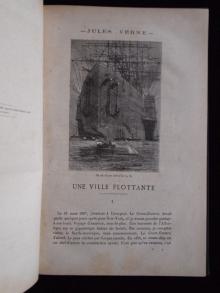 Les forceurs de blocus. English
Les forceurs de blocus. English In the Year 2889
In the Year 2889 Journey to the Centre of the Earth
Journey to the Centre of the Earth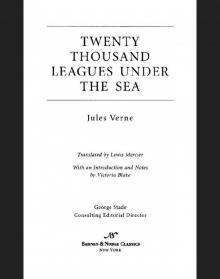 Twenty Thousand Leagues Under the Sea
Twenty Thousand Leagues Under the Sea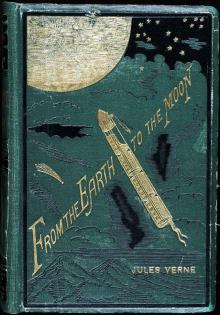 From the Earth to the Moon; and, Round the Moon
From the Earth to the Moon; and, Round the Moon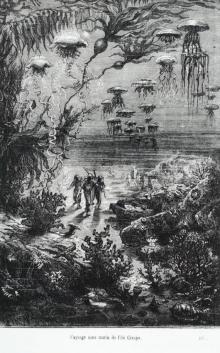 Vingt mille lieues sous les mers. English
Vingt mille lieues sous les mers. English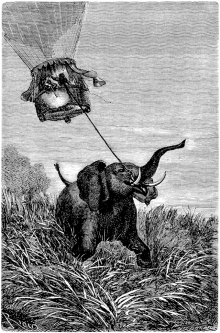 Cinq semaines en ballon. English
Cinq semaines en ballon. English Twenty Thousand Leagues under the Seas
Twenty Thousand Leagues under the Seas Face au drapeau. English
Face au drapeau. English Michael Strogoff; Or, The Courier of the Czar
Michael Strogoff; Or, The Courier of the Czar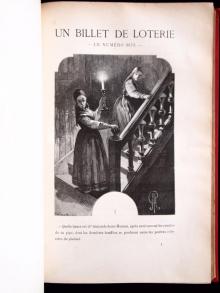 Un billet de loterie. English
Un billet de loterie. English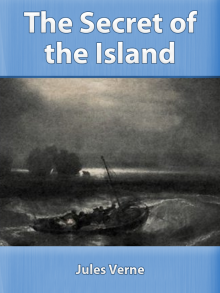 The Secret of the Island
The Secret of the Island Off on a Comet! a Journey through Planetary Space
Off on a Comet! a Journey through Planetary Space Into the Niger Bend: Barsac Mission, Part 1
Into the Niger Bend: Barsac Mission, Part 1 All Around the Moon
All Around the Moon A Journey to the Center of the Earth - Jules Verne: Annotated
A Journey to the Center of the Earth - Jules Verne: Annotated 20000 Lieues sous les mers Part 2
20000 Lieues sous les mers Part 2 Robur-le-Conquerant
Robur-le-Conquerant Les Index Noires
Les Index Noires Michael Strogoff; or the Courier of the Czar
Michael Strogoff; or the Courier of the Czar 20000 Lieues sous les mers Part 1
20000 Lieues sous les mers Part 1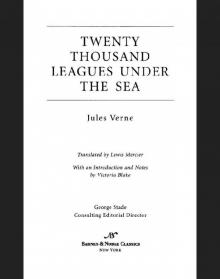 Twenty Thousand Leagues Under the Sea (Barnes & Noble Classics Series)
Twenty Thousand Leagues Under the Sea (Barnes & Noble Classics Series)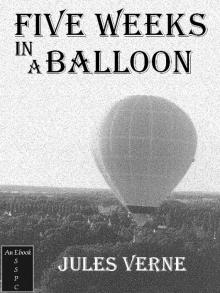 Five Weeks In A Balloon
Five Weeks In A Balloon Journey to the Center of the Earth
Journey to the Center of the Earth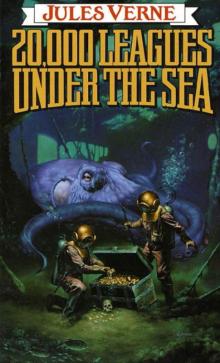 20,000 Leagues Under the Sea
20,000 Leagues Under the Sea Journey to the Center of the Earth (Barnes & Noble Classics Series)
Journey to the Center of the Earth (Barnes & Noble Classics Series)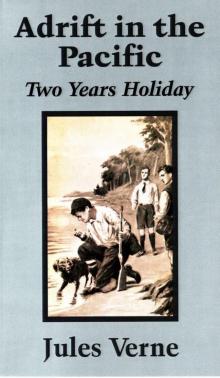 Adrift in the Pacific-Two Years Holiday
Adrift in the Pacific-Two Years Holiday The Collected Works of Jules Verne: 36 Novels and Short Stories (Unexpurgated Edition) (Halcyon Classics)
The Collected Works of Jules Verne: 36 Novels and Short Stories (Unexpurgated Edition) (Halcyon Classics) The Survivors of the Chancellor
The Survivors of the Chancellor Their Island Home
Their Island Home Le Chateau des Carpathes
Le Chateau des Carpathes Les Cinq Cents Millions de la Begum
Les Cinq Cents Millions de la Begum The Floating Island
The Floating Island Cinq Semaines En Ballon
Cinq Semaines En Ballon Autour de la Lune
Autour de la Lune